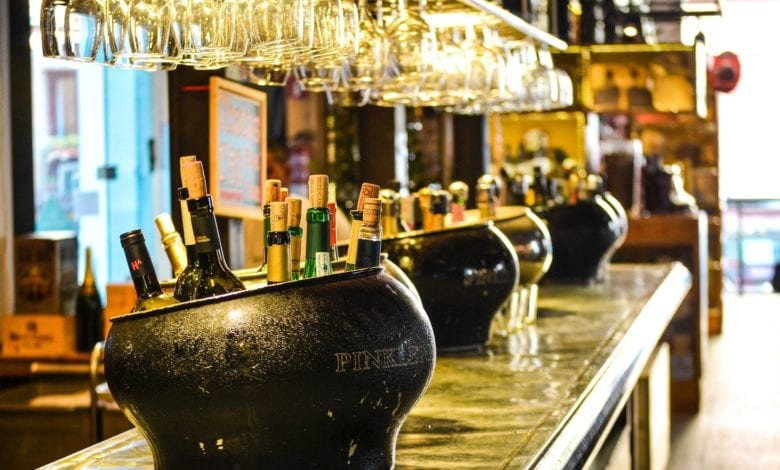
Register to get 1 free article
Reveal the article below by registering for our email newsletter.
Want unlimited access? View Plans
Already have an account? Sign in
After a report from UHY Hacker Young showed that UK restaurant insolvencies have jumped 64% from 856 in 2020/21 to 1,406, Kate Nicholls, CEO of UK Hospitality, warns that “it’s quite clear that this is just the tip of the iceberg”.
The past quarter represented the largest number of restaurant insolvencies since the Insolvency Service began reporting monthly statistics during the COVID pandemic. Key underlying issues which are leading to insolvency are reported as rising inflation levels, labour shortages and supply issues. These issues are widespread, but the hospitality industry, already in a moment of precarity coming off the back of the Covid-19 crisis, is uniquely vulnerable to be adversely crippled by the ongoing crisis.
The issues
For the industry, both short term and long term solutions are needed. Peter Kubik, partner at UHY, says that restaurants that only just managed to survive the pandemic thanks to government support are now “facing fresh challenges” in the form of rising inflation, a post-Brexit labour shortage and “consumers who simply cannot afford to spend as much”.
Building back up that underlying financial strength, which still hasn’t had a chance to recover post-Covid, is “crucial” according to Nicholls. She says the question the industry, and the Government, should be asking itself is “how do we rebuild that resilience, reduce the level of debt, make sure we’ve got an opportunity to build up those cash reserves and look at resilience of supply back in terms of finance, labour, and food supply and energy supply?”.
For staff, Kubik outlines that the repercussions from Brexit are still wreaking havoc with the sector. “Smaller restaurants are suffering the most from a shortage of EU staff post-Brexit,” he notes. “Many are finding that they simply cannot hire enough staff to serve the number of covers they need to stay profitable. That’s one of the reasons for the raft of closures we’re seeing.”
Meanwhile, research from Fourth has shown that average overall costs are up by 10% compared to 2019, with food costs up by approximately 13%, and drink costs are up by 8% over the same period.
In the 12 months to May 2022, average gross profit has fallen by four percentage points, from 78% to 74%. The hardest hit commodities are dairy (costs up by 40%), grains (+35%), meat (+35%), fish (+25%) and fruit and veg (+20%).
Regarding food costs, Sebastien Sepierre, managing director at Fourth, said the complexities are such that “most operators have never seen anything like this before. The supply chain crisis is one of the most pressing concerns within the sector and it is imperative that operators have the tools at hand to understand and address the challenge of overcoming the disruption.”
Furthermore, while the insolvency number is high, Nicholls notes that it doesn’t paint the full picture as over the coming months we will see “business failure over and above what’s happening at insolvency level”. Roughly one in three businesses “don’t have any cash reserves” and a similar number, while remaining solvent for the time being, “are not making any profit”.
Solutions: Long and short term
While long term planning is crucial for the industry, the crisis is so acute that short term solutions are necessary for the continued survival of many establishments. The most pressing issue that businesses are concerned about, according to Nicholls, is the energy cost increases. She explains that addressing these issues are “the difference between survivability and business failure at the moment” because the level of increase is so extreme that it is wiping out people’s profits overnight. “Therefore what we need from the government is some mechanism to help these businesses withstand the costs,” she adds.
Solutions include reducing the overall burden of business rates on businesses, and a reduction in the headline rate of VAT which would “help to protect those margins and insulate consumers from further cost price increases”.
Meanwhile, looking further afield, it is finding solutions to procurement and supply chains, to
make sure that they are as resilient as possible so to avoid supply chain collapse, that is the most pressing issue within the hospitality industry.
For establishing a longer term model to maintain secure and cost-effective supply chains, a focus on sustainability is necessary according to Nicholls. Hospitality businesses are looking at “energy saving measures around food waste, green energy sustainability, ways in which you can reduce energy consumption or manage energy consumption better”, says Nicholls.
Sepierre also suggests that progressive solutions to supply chain issues are crucial in maintaining an affordable and sustainable future. He explains: “Technology has a huge role to play in helping operators contend with the instability within the supply chain. It is the most efficient way of comparing suppliers, checking the availability of products, analysing price fluctuations, and knowing exactly what you need and when you need it in your venues.”
What Nicholls stresses “cannot happen”, is what she explains we saw from the government during the pandemic; “short term measures which only act as a sticking plaster until the next crisis”. For hospitality businesses to not only survive but flourish, they must be supported with long-term initiatives aimed at securing the future of the industry.







